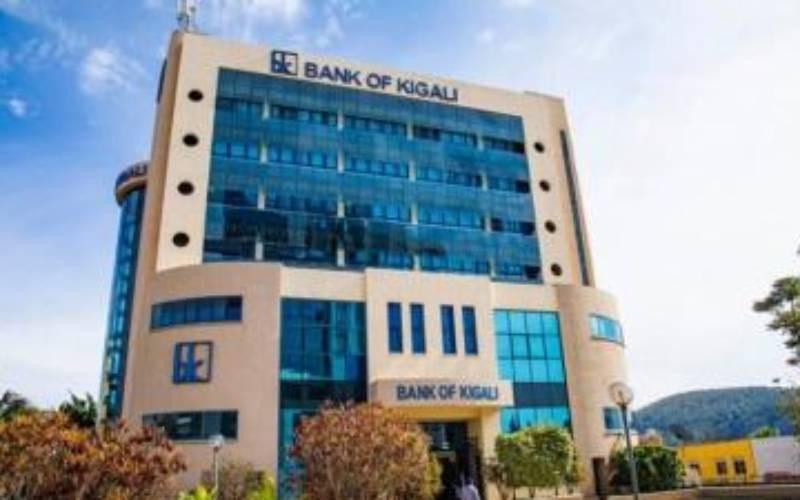NAIROBI: Recent government cash flow hiccups at Treasury have raised questions about the stability of the Kenyan economy. The ensuing debate has been marked by a gross mischaracterisation of facts and confusion over the real nature of the macroeconomic challenges we face as a country. I will try to set the record straight in the hope of refocusing the discussion over how we should manage our economy back to the real issues.
First, we should be clear about the differences between the specific governance challenges we face and the overall stability of the economy. To this end, we should look at the trends in the data and ask questions such as: Are our debt levels sustainable? Do we have sufficient reserves at the Central Bank? Is the shilling an outlier in its performance against the dollar? And, since we live in a globalised world, how do we compare with our peers?
If we answer these questions honestly, we will conclude that the fundamentals of the Kenyan economy are strong, and that the trend lines inspire confidence in the overall stability of the economy.
This is not to downplay questions about governance and the proper implementation of government projects. Rather, it is a call for us to not act like European Union ambassadors — always at the ready to predict doom unless we magically turn into Denmark. We know Kenya better than anyone else. And as such, we should differentiate between short and long-term governance issues and deal with them accordingly. There is a lot to debate about governance in Kenya, but let us not conflate those challenges with the state of macro-economy. It is hard to solve problems without first understanding them.
The two most important movements in our macro-economy in the recent past have been the shifts in the value of the shilling and the debt-to-GDP ratio. The management of exchange rate volatility is the job of the Central Bank, although Treasury can indirectly impact trends through policy. Movements in the foreign exchange (forex) market are driven not just by what we do at home, but by global economic trends as well. And so in many ways, the best we can ever do on this front is react.
Debt-to-GDP ratio is a function of how much we borrow and the size of the economy. Imagine a situation in which we do not increase borrowing at all, yet the ratio goes up on account of a sluggish economy (and the accruing interest). Notice that this ratio is also dependent on the value of the shilling. We borrow money in US dollars, but the government collects revenue in shillings. The shilling-dollar exchange rate therefore determines the purchasing power of each tax shilling. When the shilling depreciates against the dollar, the government must collect more revenue to maintain the same levels of debt servicing. Exchange rate risk is therefore part and parcel of international credit markets.
So why has the shilling fallen so much against the dollar? The answer lies well beyond our borders. Following the 2007-08 financial crises, the central banks of leading economies made credit cheap in the hope of jump-starting their economies. This increase in liquidity led to significant investments in emerging and frontier markets (like ours). However, in the recent past the expectation has been that the US central bank (Federal Reserve) would raise interest rates. Many investors therefore rushed to exit emerging and frontier market economies ahead of the rates hike. Such shifts reduced the demand for currencies other than the US dollar.
Currencies from the Euro to the Kwacha have experienced significant losses against the dollars (positive values mean greater losses).
When you put the shilling’s decline in context, things suddenly do not look that grim. According to Bloomberg, the year to date the shilling has depreciated by about 11.29 per cent to the dollar. This compares to depreciation rates of 13.78, 15.7, 20.5, 23.56 and 47.36 per cent of the South African, Ghanaian, Ugandan, Tanzanian, and Zambian currencies, respectively.
The decline of the shilling over the last year brought with it the risk of domestic inflation. This prompted the Central Bank to revise benchmark interest rates upward as part of its price stabilisation mandate (and also to shore up the shilling). The increase in interest rates in the fight against inflation raised the cost of borrowing for everyone, including the government. And so the recent increase in the cost of borrowing for the government is not simply because it is borrowing more (which is true). It is also about the specific policy moves emanating from Haile Selassie Avenue with regard to price stabilisation.
Which brings me to the issue of public debt. Governments borrow money when current revenue is not sufficient to meet expenditure. As economies grow, they tend to provide more social services, which inevitably leads to more borrowing. So how does Kenya stack up against emerging regions of the world? It is important to note that for most advanced economies, expenditure levels tend to be above 40 per cent of GDP. And so even while we debate ways of rationalising public expenditure (as we should) we must be careful not lose sight of these general secular trends. Kenya’s expenditure profile is not an outlier.
Second, if we look at actual debt ratios (to GDP) it becomes clear that Kenya’s debt situation, if managed well, should not be a cause for concern in the short-term. Despite recent increases in the debt ratio, the IMF projects our total interest payments (both domestic and foreign) to plateau at 2.5 per cent of GDP after this fiscal year. This is slightly lower than the 2.6 per cent average that we have clocked over the last couple of years when many viewed the economy to be stable. Furthermore, IMF data also show that our sovereign debt spreads in the 10 months to August 2015 have been the second lowest in sub-Saharan Africa (after South Africa).
Indeed, in the most recent policy note on the Kenyan economy the IMF deputy director is on record as having observed that “Kenya’s economic performance has remained satisfactory despite headwinds from rising volatility in global markets and domestic security challenges.”
The IMF certainly has no monopoly on the truth, but it says something that even an institution more famous for advocating (sometimes misguided) fiscal discipline is bullish about the overall state of the Kenyan economy.
Context is everything, particularly in economics. The global inter-dependence of economies means that we cannot understand the dynamics of one economy without considering regional or even global trends. To this end let us all take a time out and soberly separate proximate issues of governance and policy from the fundamentals of the economy. We can hold debates over governance reforms and policy. But let us not perpetuate the self-fulfilling prophecy that the economy is in free fall. As shown above, the fundamentals of the Kenyan economy are strong.
Stay informed. Subscribe to our newsletter
 The Standard Group Plc is a
multi-media organization with investments in media platforms spanning newspaper
print operations, television, radio broadcasting, digital and online services. The
Standard Group is recognized as a leading multi-media house in Kenya with a key
influence in matters of national and international interest.
The Standard Group Plc is a
multi-media organization with investments in media platforms spanning newspaper
print operations, television, radio broadcasting, digital and online services. The
Standard Group is recognized as a leading multi-media house in Kenya with a key
influence in matters of national and international interest.
 The Standard Group Plc is a
multi-media organization with investments in media platforms spanning newspaper
print operations, television, radio broadcasting, digital and online services. The
Standard Group is recognized as a leading multi-media house in Kenya with a key
influence in matters of national and international interest.
The Standard Group Plc is a
multi-media organization with investments in media platforms spanning newspaper
print operations, television, radio broadcasting, digital and online services. The
Standard Group is recognized as a leading multi-media house in Kenya with a key
influence in matters of national and international interest.








